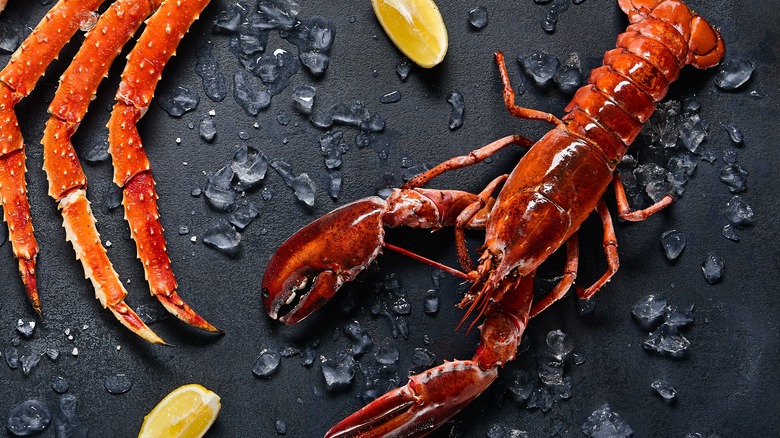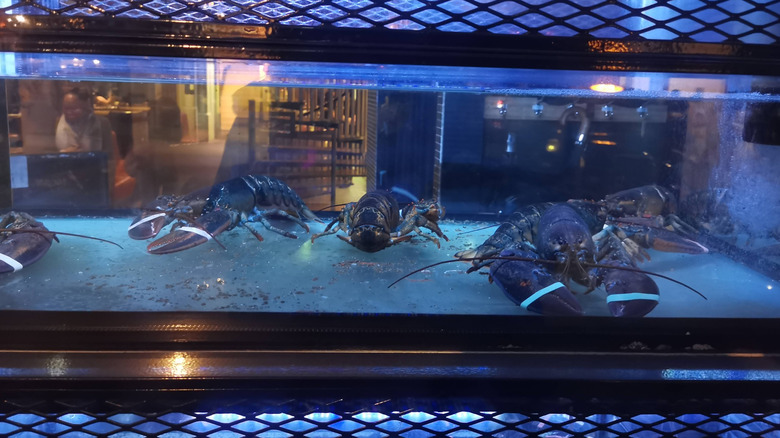How To Tell If Your Lobster Has Gone Bad
Lobster is arguably at the top of the seafood tower. It's adored as a cold salad in lobster rolls, steaming hot from a pot of boiling water or pulled off of a grill — we even put lobster on our grilled cheese sandwiches. If you've ever cracked into that tough shell and pulled out a flaky, buttery flank of lobster meat, you understand the hype.
Moreover, lobster boasts an impressive array of health benefits. Per Medical News Today, the meat is packed with protein and omega-3s, and contains nutrients that can help prevent thyroid disease, anemia, and even depression. Talk about happy news.
Other than deciding which part to crack into first, the most important thing to keep in mind when enjoying lobster is its freshness. The dish might be the crème de la crème of the seafood world, but eating shellfish that isn't fresh can cause health problems. Also, eating contaminated shellfish can bring on symptoms as mild as headache or as severe as numbness, confusion, vomiting, or severe digestive issues, says the CDC.
Cooked vs. uncooked lobster
When it comes to lobster, whether it's cooked or uncooked makes all the difference in preservation. According to Maine-based Cape Porpoise Lobster Co., time is of the essence with uncooked lobster; it lasts only for a few hours. This, it says, is why so many seafood restaurants keep their lobsters alive in an aquarium tank until just prior to cooking. The FDA says that, since lobster meat deteriorates rapidly after the crustacean dies, only live lobsters are safe to eat.
To make sure your seafood restaurant is providing live lobsters, the FDA recommends tapping on the outside of the tank: If the lobsters inside are alive, it says, there should be some leg movement. Cooked lobster, on the other hand, will keep fresh for much longer — up to three days in the refrigerator or nine months frozen, per Lobster Council of Canada.
To maintain maximum freshness, the ideal temperature for refrigerating seafood is 40 degrees Fahrenheit or lower, according to Seafood Health Facts. It recommends storing that leftover lobster in the coldest part of your fridge which, per Appliance Analytics, is its lower sections.
Look for signs of freshness
To spot a lobster that's past its prime, MedMunch recommends analyzing the texture. Raw lobster meat, it says, should feel firm and dry, and if the shell is still intact, it should feel coarse. If the meat feels squishy or if the shell is slimy to the touch, play it safe and toss out those leftovers.
Lobster Anywhere cautions crustacean consumers to look out for discolored meat. Freshie's Lobster Co. explains that fresh lobster meat should be a creamy white color; any intermittent pink from cooking is nothing to worry about. But, if you notice any hint of a green hue, discard the lobster immediately.
If you've given your lobster a good once-over, but you still aren't sure, Farming Aquaponics suggests giving it a good sniff. The microbes that infiltrate rotten food and cause foodborne illnesses emit a distinctly unpleasant, pungent odor, which should be easy to identify.


